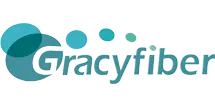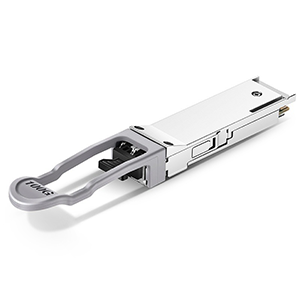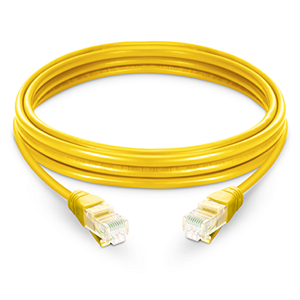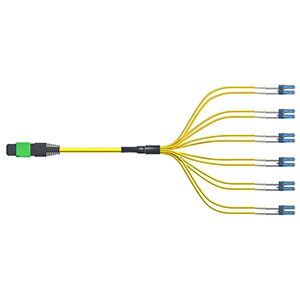QSFP28 optical module plays a key role in high-speed network communications. This article will delve into the optical fiber quantity standard and its technical principles in the QSFP28 optical module. First, we will introduce the basic concepts of the QSFP28 optical module, including its physical structure, interface specifications, and application scenarios in different network equipment.
Next, we will focus on the fiber quantity classification of QSFP28 optical modules, explain the specific implementation methods of single-mode and multi-mode optical fibers and their technological development. Subsequently, we will analyze the advantages of single-mode QSFP28 in high-bandwidth applications and the application scenarios of multi-mode QSFP28 in short- and medium-distance applications. Finally, we will help you weigh factors such as bandwidth requirements, transmission distance, cost, power consumption and compatibility, and provide you with suggestions for selecting the appropriate number of QSFP28 optical fibers.

Basic concepts of QSFP28 optical module
Let me introduce you to the basic concepts of QSFP28 optical module in detail:
Physical structure and interface specifications of QSFP28 optical module:
- QSFP28 is an optical module standard for high-speed Ethernet and optical fiber communications.
- It adopts a four-channel parallel design, and each channel can support data rates up to 28Gbps.
- The dimensions of the QSFP28 module are (H)14.0mm x (W)18.35mm x (L)72.0mm.
- It is equipped with a 28-pin extremely high-density connector that connects to the QSFP28 slot of the host device.
- QSFP28 complies with industry standards such as IEEE 802.3bm and SFF-8665, ensuring module interoperability.
Usage scenarios of QSFP28 in different network devices:
- Data center switch: QSFP28 is the mainstream interface for high-speed Ethernet interconnection in data centers.
- Routers and gateways: QSFP28 can be used for fiber optic interconnection between high-bandwidth routing devices.
- Servers and storage devices: QSFP28 helps achieve high-speed connections between servers and storage systems.
- Telecom equipment: QSFP28 is widely used in high-speed optical transmission equipment such as ROADM and OTN equipment.
- Testing instruments: QSFP28 interface is widely used in optical transceiver modules of high-speed network testers.
Main features of QSFP28 module:
- Ultra-high bandwidth: Each channel can support up to 28Gbps, and the total bandwidth is up to 100/200Gbps.
- High-density integration: Adopting a parallel 4-channel design, which greatly improves port density and space utilization.
- Low power consumption design: Typical power consumption is between 3-4.5W, which is beneficial to network equipment energy consumption management.
- Hot-swappable capability: QSFP28 modules can be installed and removed without interrupting service.
- Extensive interoperability: It complies with industry standards and can be plug-and-play with equipment from mainstream manufacturers.
In short, QSFP28 optical module has become one of the leading interface standards in current high-speed Ethernet and optical transmission networks due to its excellent technical performance and wide range of application scenarios.
Fiber quantity standards for QSFP28 optical modules
Let me introduce to you in detail the standards of the QSFP28 optical module in terms of fiber quantity:
Different types of QSFP28 optical modules and the corresponding number of optical fibers:
- QSFP28-SR4: 4 multi-mode optical fibers, supporting a maximum data rate of 100Gbps.
- QSFP28-LR4: 4 single-mode optical fibers, supporting a maximum data rate of 100Gbps.
- QSFP28-CWDM4: 4 single-mode CWDM fibers, supporting a maximum data rate of 100Gbps.
- QSFP28-PSM4: 4 single-mode parallel optical fibers, supporting a maximum data rate of 100Gbps.
- QSFP28-BiDi: 2 single-mode bidirectional optical fibers, supporting a maximum data rate of 100Gbps.
Technical principles of QSFP28 optical fiber quantity standard:
- The design of 4-channel parallel transmission is the key to realizing 100Gbps high-speed Ethernet.
- The data rate of each channel is 25Gbps, and the superposition of 4 channels can reach 100Gbps.
- The difference between using multi-mode optical fiber and single-mode optical fiber determines the transmission distance of the QSFP28 module.
- Some special types, such as CWDM4 and BiDi, use wavelength division multiplexing technology to further optimize performance.
The development history of QSFP28 optical fiber quantity standard:
- The early QSFP28 standard mainly defined four versions of multimode and single-mode optical fibers.
- Special types such as CWDM4 and PSM4 were subsequently introduced to meet the needs of different application scenarios.
- Currently, QSFP28 is developing towards higher speeds such as 800G and 1.6T, and the number of optical fibers will also increase accordingly.
- More QSFP28 optical module types may appear in the future to meet richer network applications.
In short, the optical fiber quantity standard of QSFP28 optical module reflects the network’s continuous pursuit of high speed and diversification needs. These standards are designed to provide optimal optical transmission performance for different application scenarios. With the advancement of network technology, QSFP28 optical modules will play a more important role in future networks.
How to configure QSFP28 single-mode fiber
Let me give you a detailed introduction to the implementation of the QSFP28 single-mode optical fiber interface and its advantages in high-bandwidth applications:
Implementation of QSFP28 single-mode optical fiber interface:
- The QSFP28-LR4 standard defines four single-mode fiber channels for 100Gbps Ethernet transmission.
- The data rate of each fiber channel is 25Gbps, and the parallel transmission of 4 channels reaches a total bandwidth of 100Gbps.
- Using DWDM technology to multiplex 4 channels on a single optical fiber, achieving high-density integration.
- The core diameter of single-mode fiber is 9/125μm, which can support high-speed transmission over long distances.
Advantages of QSFP28 single-mode fiber in high-bandwidth applications:
- Transmission distance advantage: Single-mode optical fiber can support transmission distances up to 10-40km.
- Bandwidth advantage: 4 channels of parallel transmission, a single QSFP28 single-mode connector can provide 100Gbps bandwidth.
- Cost advantage: Compared with multi-mode optical fiber, the cost advantage of single-mode QSFP28 module is more obvious.
- Strong anti-interference ability: Single-mode optical fiber has better ability to suppress electromagnetic interference than multi-mode optical fiber.
- Power consumption advantage: The power consumption of QSFP28-LR4 single-mode module is generally lower than 3-4.5W.
Application of QSFP28 single-mode optical fiber in different application scenarios:
- Data center core layer: QSFP28-LR4 single-mode module can be used for high-bandwidth core switch interconnection.
- Operator backbone network: Single-mode QSFP28 can support high-speed interconnection of backbone transmission networks.
- Campus/Enterprise WAN: Single-mode QSFP28 is helpful for realizing long-distance interconnection on campus or enterprise campus.
- High Performance Computing: QSFP28-LR4 facilitates low-latency connections between high-performance computing cluster nodes.
In short, QSFP28 single-mode optical fiber module is widely favored in fields such as high-speed Ethernet and optical transmission due to its excellent transmission distance, bandwidth density and power consumption advantages. It provides an ideal interconnection solution for various high-bandwidth application scenarios.
How to configure QSFP28 multimode fiber
Let me introduce to you the typical layout of the QSFP28 multi-mode optical fiber interface and its application scenarios in short and medium distance applications:
Typical layout of QSFP28 multi-mode optical fiber interface:
- The QSFP28-SR4 standard defines four multi-mode optical fibers as interfaces for 100Gbps Ethernet transmission.
- The data rate of each multi-mode optical fiber channel is 25Gbps, and the parallel transmission of 4 channels can reach a total bandwidth of 100Gbps.
- The core diameter of multimode fiber is usually 50/125μm or 62.5/125μm, which provides good optical coupling characteristics.
- The optical transmitter and receiver of the QSFP28 multi-mode module are integrated together to form a compact optical module.
Advantages of QSFP28 multimode fiber in short and medium distance applications:
- Transmission distance advantage: QSFP28-SR4 multi-mode fiber can support transmission distances up to 100-300 meters.
- Cost advantage: Compared with single-mode optical fiber, the multi-mode QSFP28 module has a lower cost and is suitable for medium and short distance applications.
- Ease of use advantages: Multimode optical fiber has good coupling performance, and the connection and wiring operations are simpler than single-mode fiber.
- Power consumption advantage: The power consumption of the QSFP28-SR4 multi-mode module is also low, usually between 3-4.5W.
Application of QSFP28 multi-mode optical fiber in different application scenarios:
- Data center access layer: QSFP28-SR4 multi-mode module is suitable for high-speed interconnection between racks and cabinets.
- Enterprise campus network: QSFP28 multi-mode can meet the short-to-medium distance network connection needs of campuses, office buildings, etc.
- Industrial automation field: Multi-mode QSFP28 helps achieve high-speed interconnection between equipment on the factory floor.
- Media and broadcasting industry: QSFP28-SR4 can support the high bandwidth requirements of broadcast-level video transmission.
In short, the QSFP28 multi-mode optical fiber interface has been widely used in data centers, enterprise networks, industrial automation and other fields due to its medium and short-distance transmission capabilities, low cost and ease of use. It provides an ideal solution for these short to medium distance high-speed network interconnections.
Consideration factors for selecting the number of QSFP28 optical fibers
Let me summarize for you the main factors to consider when choosing the number of QSFP28 fibers:
Bandwidth requirements:
- Determine current and foreseeable network bandwidth needs in the future, such as 100G, 200G, 400G, etc.
- Choose 4-channel, 8-channel or more QSFP28 optical module configurations based on bandwidth requirements.
- For 100Gbps Ethernet, 4-channel QSFP28-SR4 or QSFP28-LR4 are common choices.
Transmission distance:
- Select the appropriate single-mode or multi-mode optical fiber configuration based on the actual distance requirements for network equipment deployment.
- QSFP28-SR4 multi-mode optical fiber is suitable for short and medium distance transmission of 100-300 meters.
- QSFP28-LR4 single-mode fiber can support longer-distance transmission of 10-40 kilometers.
Cost factors:
- Multi-channel QSFP28 modules are usually more expensive than single-channel modules, and bandwidth and cost need to be weighed.
- Multimode fiber is generally more cost-effective than single-mode fiber, but has shorter transmission distances.
- When choosing, you need to evaluate the overall cost of optical modules, optical fibers and other equipment.
Power consumption considerations:
- The power consumption of QSFP28 module increases with the increase of channel number and transmission distance.
- Appropriate power consumption specifications need to be selected based on the power supply and heat dissipation capabilities of the network equipment.
- Generally speaking, the power consumption of single-mode QSFP28 modules is slightly higher than that of multi-mode.
Compatibility requirements:
- The QSFP28 optical module needs to be fully compatible with the slot of the host device.
- Also consider interoperability with existing network equipment and topologies.
- It is important to choose a QSFP28 module model with extensive certifications and compatibility.
In summary, when selecting the number of QSFP28 optical fibers, you need to weigh factors such as bandwidth requirements, transmission distance, cost, power consumption, and compatibility. Through careful evaluation and selecting the optimal QSFP28 configuration solution, network performance, reliability and economy can be ensured.
Summary
With the rapid development of network technology, QSFP28 optical modules are becoming an indispensable key component of high-speed networks. Our company has long been focused on the research and development of QSFP28 optical modules and related products, and has rich industry experience. Whether you need single-mode or multi-mode QSFP28 optical modules, we can provide you with high-quality solutions.
Our QSFP28 products are available inThe number of optical fibers, transmission performance, power consumption management and other aspects have reached the industry-leading level, which can meet the demanding needs of your high-speed network applications. At the same time, we provide professional technical support and customized services to help you choose the most appropriate QSFP28 optical module according to actual application scenarios. Contact us now to learn more about our company’s QSFP28 product line and related services!
QSFP28 Optical Module FAQ
QSFP28 is a type of high-speed, pluggable optical transceiver module used in 100 Gigabit Ethernet and other high-bandwidth networking applications.
A standard QSFP28 optical module typically has 8 fibers, with 4 fibers for transmit and 4 fibers for receive, to support full-duplex 100G operation.
Yes, there are QSFP28 modules available with a single transmit and single receive fiber, known as QSFP28 BiDi (Bidirectional) modules.
The multiple fibers in a QSFP28 module allow for parallel transmission of data streams to achieve the high aggregate bandwidth of 100G Ethernet.
QSFP28 modules can be designed to use either single-mode or multi-mode fiber, depending on the specific application and transmission distance requirements.
The fibers are typically arranged in a dual-row configuration and terminated with MPO (Multi-fiber Push-On) or MTP connectors.
While QSFP28 modules with different fiber counts (e.g., 8 fibers vs. 2 fibers) may be physically compatible, they may not be functionally compatible without proper configuration.
Single-fiber QSFP28 BiDi modules can reduce the number of required fiber strands, simplify cabling, and potentially lower the overall system cost.
Potential limitations include reduced redundancy, potential for signal interference, and the need for careful wavelength planning and optical power management.
It’s essential to carefully review the technical specifications and ensure compatibility with the specific network equipment and fiber optic infrastructure.




